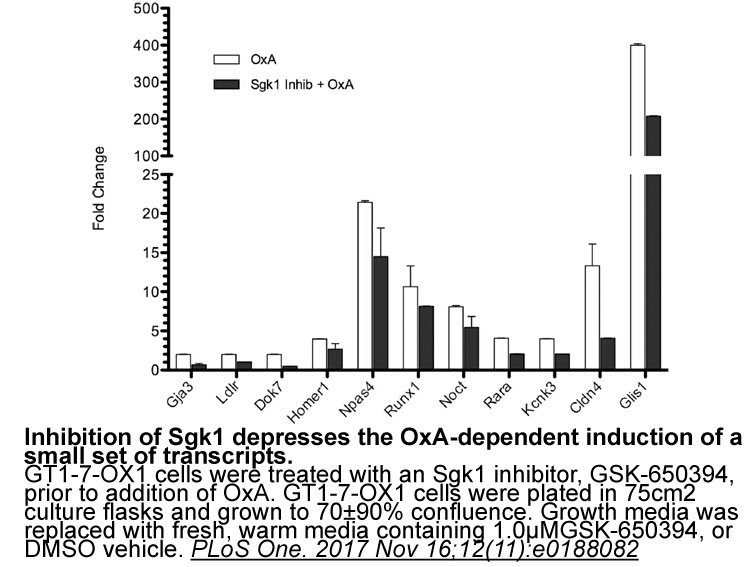Archives
br Conclusions br Acknowledgements This work was supported b
Conclusions
Acknowledgements
This work was supported by the Science and Technology Planning Projects of Guangdong Province (2014A020210027); the Major Scientific Research Projects of Universities in Guangdong Province (2016KZDXM042); the Natural Science Foundation of Guangdong Province (2015A030310120); and the National Natural Science Foundation of China (No. 81273423).
Introduction
Under physiological conditions, inflammation plays a protective role against exogenous and endogenous noxious stimuli such as infectious organisms or damaged tissues. However, under pathological conditions, inflammation contributes to the development of a vast array of diseases that share the presence of an inflammatory component in their pathogenetic process. Thus, inflammatory conditions are recognized as a part of the pathogenesis of sepsis, atherosclerosis, rheumatoid arthritis, neurodegenerative diseases, diabetes, liver diseases, lung diseases and inflammatory skin diseases [1].
Epidermal growth factor receptor (EGFR) is a tyrosine kinase that has been studied extensively as a target for development of anticancer therapies [2], [3], [4], [5], [6], [7]. Recently, the EGFR–ERK pathway has been shown to play a crucial role in several inflammatory conditions. A recent study unveiled that tris(2-chloroethyl)phosphate (TCEP) induces inflammatory response in HepG2 cancer cells through EGFR stimulation which could be counteracted through EGFR inhibition [8]. Also, EGFR activation was found to be required for the development of respiratory inflammation by respiratory syncytial virus (RSV) and by nontypeable Haemophilus influenzae (NTHi) [9], [10]. In addition, a crucial regulatory role for EGFR in thrombin-mediated inflammation was reported recently [11]. Furthermore, a study of obesity-related cardiovascular diseases showed that inhibition of EGFR resulted in attenuation of palmitic acid-induced inflammation in BMS-626529 cells [12]. Moreover, in vivo inhibition of EGFR in a spinal cord injury as a model of neuroinflammation resulted in decrease of inflammation and the secondary damage [13].
Macrophages are immune cells playing pivotal roles in the development of inflammation [14]. Interestingly, recent studies showed potential roles for ligand stimulation of EGFR in macrophage cells suggesting EGFR-dependent production of inflammatory cytokines and chemokines [15], [16]. It was shown that nitric oxide (NO), cytokines and chemokines production was attenuated in EGFR-deleted macrophages [16]. In addition, in vivo experiments using mice with EGFR deleted myeloid cells (the progenitor cells that differentiate into macrophages) or inhibiting the EGFR using a small molecule inhibitor resulted in significant reduction of atherosclerosis [17], [18]. Furthermore, in vitro EGFR inhibition decreased LPS-induced cytokine production by macrophages while in vivo EGFR inhibition attenuated LPS-triggered lung inflammation [18]. A logic consequence to the previously mentioned recent studies validating EGFR inhibition in macrophages as a promising target for development of anti-inflammatory therapeutics would be pursuing the development of EGFR inhibitors as anti-inflammatory agents. However, to the best of our knowledge, such effort has not been reported yet despite the use of some EGFR inhibitor molecules in elucidating the biological role of EGFR activation in developing inflammation.
Several fused pyrimidine-based small molecules were developed as antitumor EGFR inhibitors such as lapatinib (1, quinazoline scaffold, Fig. 1) [19], compound 2 (oxazolo[5,4-d]pyrimidine scaffold) [20] and compound 3 (thiazolo[4,5-d]pyrimidine scaffold) [21]. Despite the development of several unfused pyrimidines as EGFR inhibitors, only few reports exist of unfused pyrimidines bearing substituents in positions equivalent to that of fused pyrimidines 1–3. Based on a cheminformatics approach, we have recently reported the discovery of a hit EGFR inhibitor small molecule compound 4a [22]. Based on our previous report, we have synthesized 4-aryloxy-5-benzamidopyrimidine derivatives (4, Fig. 2) and the closely related 4-aryloxy-5-(3-phenylureido)pyrimidine derivative (5) in an attempt to develop anti-inflammatory EGFR inhibitors against the well-known inflammatory macrophage cells. According to our previous report, the  amide analogs (4) would elicit EGFR inhibition while the closely related urea derivative (5) would not show a significant EGFR inhibition. The high structural similarity of urea derivative (5) to the EGFR active amide series (4) might allow us to employ it as a decoy to assess and elucidate
amide analogs (4) would elicit EGFR inhibition while the closely related urea derivative (5) would not show a significant EGFR inhibition. The high structural similarity of urea derivative (5) to the EGFR active amide series (4) might allow us to employ it as a decoy to assess and elucidate  the possible relation between the anticipated anti-inflammatory activities with EGFR inhibition of these compounds. The amide analogs (4) possessed two variably substituted phenyl moieties. On the other hand, the urea derivative (5) possessed methoxy substituents on both phenyl rings. Herein, we report our interesting results.
the possible relation between the anticipated anti-inflammatory activities with EGFR inhibition of these compounds. The amide analogs (4) possessed two variably substituted phenyl moieties. On the other hand, the urea derivative (5) possessed methoxy substituents on both phenyl rings. Herein, we report our interesting results.